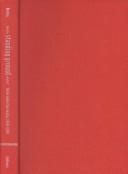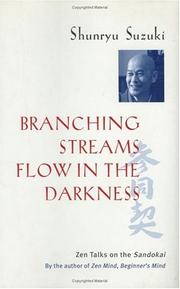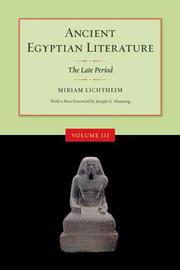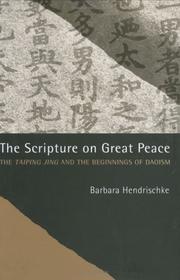| Listing 1 - 5 of 5 |
Sort by
|

ISBN: 1282359576 9786612359576 0520936442 1597349178 9780520936447 0585465932 9780585465937 9780520233584 0520233581 9780520233898 0520233891 0520233581 0520233891 9781282359574 Year: 2002 Publisher: Berkeley University of California Press
Abstract | Keywords | Export | Availability | Bookmark
 Loading...
Loading...Choose an application
- Reference Manager
- EndNote
- RefWorks (Direct export to RefWorks)
This colorful, richly textured account of spiritual training and practice within an American Indian social network emphasizes narrative over analysis. Thomas Buckley's foregrounding of Yurok narratives creates one major level of dialogue in an innovative ethnography that features dialogue as its central theoretical trope. Buckley places himself in conversation with contemporary Yurok friends and elders, with written texts, and with twentieth-century anthropology as well. He describes Yurok Indian spirituality as "a significant field in which individual and society meet in dialogue-cooperating, resisting, negotiating, changing each other in manifold ways. 'Culture,' here, is not a thing but a process, an emergence through time."
Yurok Indians --- Euroc Indians --- Weithspeh Indians --- Weithspek Indians --- Indians of North America --- Religion. --- 19th century. --- 20th century. --- america. --- american indians. --- anthropology. --- cultural anthropologists. --- ethnographers. --- ethnography. --- historians. --- indigenous peoples. --- native american history. --- native american scholars. --- native americans. --- native culture. --- native spirituality. --- nonfiction. --- social network. --- spiritual practices. --- spiritual training. --- spirituality and religion. --- theoretical perspective. --- tribal elders. --- tribal stories. --- yurok indians. --- yurok narratives.

ISBN: 052093623X 1280095008 1597345105 9786613520432 9780520936232 0520219821 9780520219823 9781280095009 9781597345101 6613520438 Year: 1999 Publisher: Berkeley University of California Press
Abstract | Keywords | Export | Availability | Bookmark
 Loading...
Loading...Choose an application
- Reference Manager
- EndNote
- RefWorks (Direct export to RefWorks)
When Shunryu Suzuki Roshi's Zen Mind, Beginner's Mind was published in 1972, it was enthusiastically embraced by Westerners eager for spiritual insight and knowledge of Zen. The book became the most successful treatise on Buddhism in English, selling more than one million copies to date. Branching Streams Flow in the Darkness is the first follow-up volume to Suzuki Roshi's important work. Like Zen Mind, Beginner's Mind, it is a collection of lectures that reveal the insight, humor, and intimacy with Zen that made Suzuki Roshi so influential as a teacher. The Sandokai-a poem by the eighth-century Zen master Sekito Kisen (Ch. Shitou Xiqian)-is the subject of these lectures. Given in 1970 at Tassajara Zen Mountain Center, the lectures are an example of a Zen teacher in his prime elucidating a venerated, ancient, and difficult work to his Western students. The poem addresses the question of how the oneness of things and the multiplicity of things coexist (or, as Suzuki Roshi expresses it, "things-as-it-is"). Included with the lectures are his students' questions and his direct answers to them, along with a meditation instruction. Suzuki Roshi's teachings are valuable not only for those with a general interest in Buddhism but also for students of Zen practice wanting an example of how a modern master in the Japanese Soto Zen tradition understands this core text today.
Zen Buddhism --- Doctrines. --- Sekito Kisen --- Kisen, Sekito --- 1970. --- beauty. --- buddhism. --- buddhist poetry. --- buddhist teachings. --- buddhists. --- collection of lectures. --- eastern philosophy. --- japan. --- japanese buddhism. --- life journey. --- meditation instructions. --- modern buddhism. --- nonfiction. --- oneness. --- philosophy. --- question and answer. --- religious treatise. --- sandokai. --- soto zen tradition. --- spiritual insight. --- spiritualism. --- spirituality and religion. --- students and teachers. --- western students. --- world religions. --- zen buddhism. --- zen masters. --- zen practices. --- zen teachers. --- zen.
Book
ISBN: 9780124078642 0124079431 0124078648 1306189217 9780124079434 9781306189217 Year: 2014 Publisher: London : Academic Press,
Abstract | Keywords | Export | Availability | Bookmark
 Loading...
Loading...Choose an application
- Reference Manager
- EndNote
- RefWorks (Direct export to RefWorks)
Religion in Personality Theory makes clear the link between theory and research and personality and religion. Presently, most personality texts have a limited discussion of religion and reference few theorists other than Freud and Maslow in relation to the subject. This book reviews the theory and the empirical literature on the writings of 14 theorists. Every chapter concludes with a summation of the current research on the theorist's proposals. Identifies what major personality theorists say about religionInvestigates whether evidence supports or refute
Personality --- Religious aspects --- Personality. --- Psychology. --- Religion. --- Religion, Primitive --- Atheism --- Irreligion --- Religions --- Theology --- Behavioral sciences --- Mental philosophy --- Mind --- Science, Mental --- Human biology --- Philosophy --- Soul --- Mental health --- Personal identity --- Personality psychology --- Personality theory --- Personality traits --- Personology --- Traits, Personality --- Psychology --- Individuality --- Persons --- Self --- Temperament --- Personality - Religious aspects --- the psychology of religion --- spirituality --- Sigmund Freud --- Carl Jung --- Alfred Adler --- Karen Horney --- Erik Erikson --- Eric Fromm --- Burris Frederic Skinner --- Albert Bandura --- Walter Mischel --- Raymond Cattell --- Abraham Maslow --- Victor Frankl --- Gordon Allport --- John Bowlby --- spirituality and religion --- zen buddhism --- Religious aspects.

ISBN: 1283422565 9786613422569 0520933079 9780520933071 0520248430 9780520248441 0520248449 9786613425935 0520933060 1283425939 9781283422567 6613422568 Year: 2006 Publisher: Berkeley, CA University of California Press
Abstract | Keywords | Export | Availability | Bookmark
 Loading...
Loading...Choose an application
- Reference Manager
- EndNote
- RefWorks (Direct export to RefWorks)
First published in 1973 - and followed by Volume II in 1976 and Volume III in 1980 - this anthology has assumed classic status in the field of Egyptology and portrays the remarkable evolution of the literary forms of one of the world's earliest civilizations. Volume I outlines the early and gradual evolution of Egyptian literary genres, including biographical and historical inscriptions carved on stone, the various classes of literary works written with pen on papyrus, and the mortuary literature that focuses on life after death. Introduced with a new foreword by Antonio Loprieno.Volume II shows the culmination of these literary genres within the single period known as the New Kingdom (1550-1080 B.C.). With a new foreword by Hans-W. Fischer-Elfert.Volume III spans the last millennium of Pharaonic civilization, from the tenth century B.C. to the beginning of the Christian era. With a new foreword by Joseph G. Manning.
Languages & Literatures --- Middle Eastern Languages & Literatures --- Egyptian literature --- Egypt --- ahmose son of abana. --- amenhotep. --- ancient egypt. --- ancient egyptian prayers. --- egyptian studies. --- egyptology. --- general haremhab. --- giza. --- hieroglyphics. --- hymns. --- inscriptions. --- kadesh battle. --- merneptah. --- new kingdom. --- obelisk. --- paheri. --- penitential hymns. --- pharoh. --- prayers. --- pyramids. --- royal families. --- sphinx. --- spirituality and religion. --- thutmose. --- tomb of neferhotep. --- vizier rekhmire. --- volume ii. --- amenemope. --- ancient history. --- biographical. --- early christian era. --- egyptian civilization. --- egyptian literary genres. --- historical inscription. --- historical. --- history. --- new edition. --- new forward. --- new kingdom of egypt. --- papyrus. --- pharaonic civilization. --- updated edition. --- volume iii.

ISBN: 1281752452 9786611752453 0520932927 1433701375 9780520932920 9781281752451 0520247884 9780520247888 9781433701375 6611752455 Year: 2006 Publisher: Berkeley : University of California Press,
Abstract | Keywords | Export | Availability | Bookmark
 Loading...
Loading...Choose an application
- Reference Manager
- EndNote
- RefWorks (Direct export to RefWorks)
This first Western-language translation of one of the great books of the Daoist religious tradition, the Taiping jing, or "Scripture on Great Peace," documents early Chinese medieval thought and lays the groundwork for a more complete understanding of Daoism's origins. Barbara Hendrischke, a leading expert on the Taiping jing in the West, has spent twenty-five years on this magisterial translation, which includes notes that contextualize the scripture's political and religious significance. Virtually unknown to scholars until the 1970's, the Taiping jing raises the hope for salvation in a practical manner by instructing men and women how to appease heaven and satisfy earth and thereby reverse the fate that thousands of years of human wrongdoing has brought about. The scripture stems from the beginnings of the Daoist religious movement, when ideas contained in the ancient Laozi were spread with missionary fervor among the population at large. The Taiping jing demonstrates how early Chinese medieval thought arose from the breakdown of the old imperial order and replaced it with a vision of a new, more diverse and fair society that would integrate outsiders-in particular women and people of a non-Chinese background.
Philosophy, Chinese. --- Taoism --- RELIGION / Taoism (see also PHILOSOPHY / Taoist). --- Daoism --- Taouism --- Religions --- Tao --- Chinese philosophy --- Early works to 1800. --- Tai ping jing. --- Tʻai pʻing ching --- Tai Ping jing chao --- Taiping jing --- Scripture on great peace --- Tai ping jing.. --- Taoism -- Early works to 1800.. --- academic studies about religion. --- appease heaven. --- chinese medieval thought. --- chinese philosophy. --- daoism. --- environmentalism. --- epistemological. --- epistemology. --- how to satisfy the earth. --- imperial order. --- integration of women. --- laozi. --- non-chinese. --- practical spirituality. --- religious movement. --- salvation. --- spiritual revolution. --- spirituality and religion. --- taiping jing. --- translated edition. --- western-language translation.
| Listing 1 - 5 of 5 |
Sort by
|

 Search
Search Feedback
Feedback About UniCat
About UniCat  Help
Help News
News